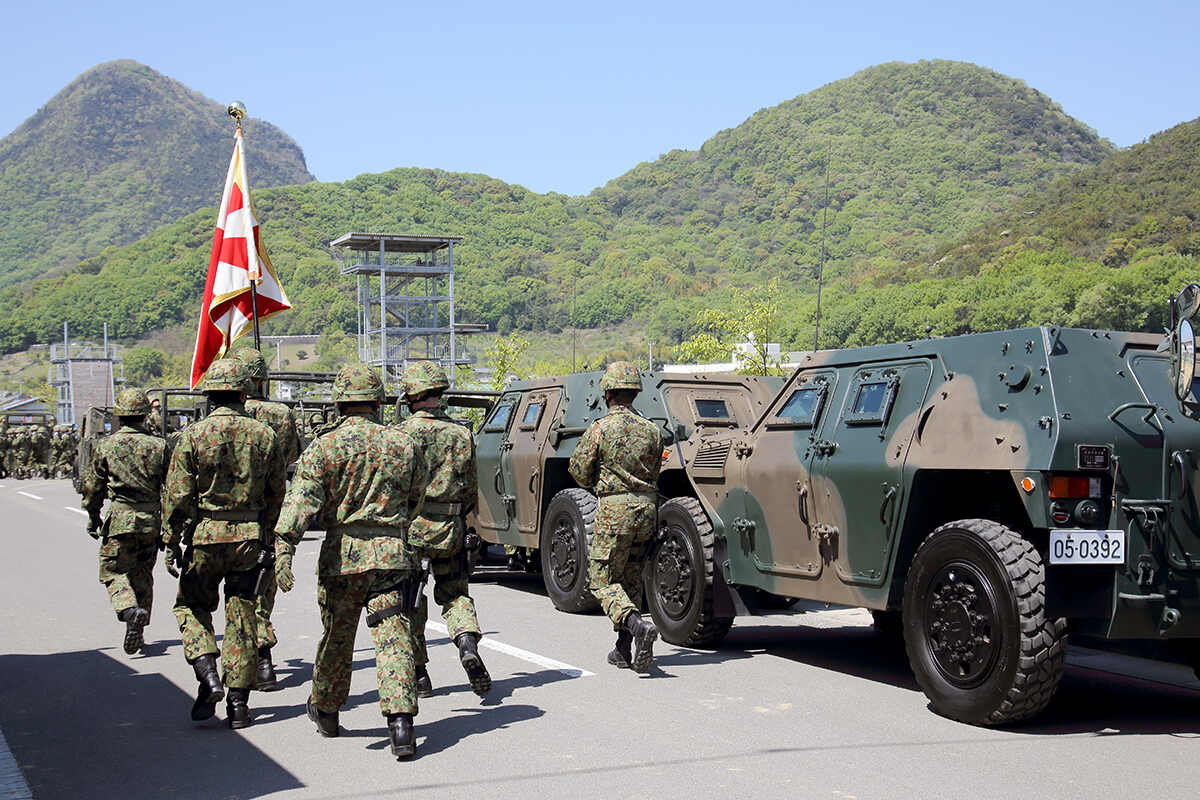
Tim Marshall considers the new role the Japanese will be taking in regional geopolitics
Japan began to rouse itself during the first period in office of the late prime minister Abe Shinzo (2006-07). He began the process of reversing public support for Japan’s post-war pacifism and diluting Article 9 of the country’s US-imposed constitution, which reads ‘1. The Japanese people forever renounce war as a sovereign right of the nation and the threat or use of force as a means of settling international disputes. 2. In order to accomplish the aim of the preceding paragraph, land, sea and air forces, as well as other war potential, will never be maintained. The right of belligerency of the state will not be recognized.’
The new Japanese National Security Strategy (NSS) flies several next-generation fighter jets straight through Article 9. A small majority of the Japanese public is in favour of the new policy, which was formally approved by the Japanese cabinet in December. The NSS is the culmination of the changes set in motion by Abe, which included a reinterpretation of the constitution and the aim of not depending entirely on the USA for the defence of the country. The document’s conclusion calls this decade ‘an inflection point in history’ and says that ‘Japan is finding itself in the midst of the most severe and complex security environment since the end of the Second World War. In no way can we be optimistic about what the future of the international community will bring.’
This refers to the fast-growing power of the Chinese military and its potential plans to invade Taiwan, along with territorial disputes with Beijing. Tensions with Russia remain high and there’s alarm at the behaviour of North Korea, which last year conducted 86 tests of ballistic missiles. The Japanese live in what US diplomats refer to as a ‘tough neighbourhood’ and the NSS describes North Korea as ‘an even more grave and imminent threat to Japan’s national security than ever’.
The defence budget, which for years was capped at one per cent of GDP, is to rise to two per cent, which in the world’s third-largest economy buys a lot of equipment and will make Japan the third-highest spender on defence. Cyber warfare systems and Tokyo’s military space programme will both have a US$7 billion budget. Two new ballistic-missile-defence warships, with the ability to shoot down both conventional and hypersonic glide missiles, are planned. At least US$6 billion will go towards a sixth-generation fighter jet to be built in cooperation with the UK and Italy, although that isn’t due to come into service until the mid-2030s.
More pressing and ground-breaking is the acquisition of long-range missiles capable of hitting targets up to 3,000 kilometres away, for which read China, North Korea and Russia. The term ‘counterstrike’ is used in the document and is a capability designed to fill the deterrence gap Japan has had for decades. Its current supply of missiles has a range of just a few hundred kilometres, meaning that Japan could be attacked by missiles but be unable to respond in kind.
However, the fearsome weaponry Japan is assembling is still not designed to be an offensive arsenal and there’s no bellicose or threatening language in the NSS document. This didn’t stop China and North Korea from attacking it. Beijing released a statement saying that ‘Japan has a history of straying into militarism and committing aggression and crimes against humanity, which has brought disaster to the region and the world’.
However, India, Australia, Taiwan and the USA, which share Japan’s anxiety about what they see as Chinese, North Korean and Russian aggression, are comfortable with Tokyo’s defence posture. The Americans, who station an aircraft carrier group in Tokyo Bay, are relieved that Japan is now willing to share more of the financial and military cost of meeting the challenge from China.
Washington knows that if China successfully invades Taiwan, the USA will probably be eventually pushed back into the eastern Pacific. Japan knows this too, and that Taiwan is close to the Japanese island of Okinawa. Tokyo’s new defence strategy reflects an old relationship, but new conditions.




